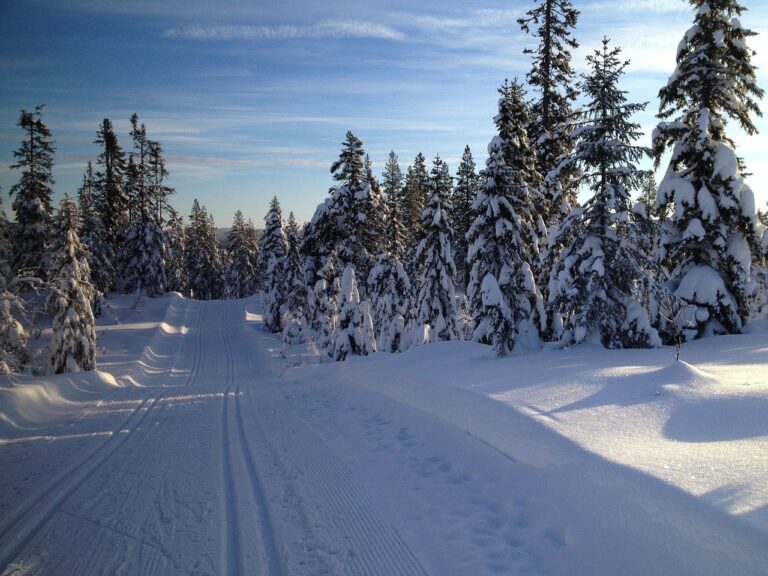Use your bodyweight to scull faster! What is the similarity between Nordic Skiing and Sculling? Raf found this great blog post from Troy Howell in which he aligns Nordic Skiing with sculling and draws brilliant parallels with the best scullers and the mediocre.
If you want good cross-training it seems that nordic skiing is a step up from your average indoor 90 minutes ergo.
Nordic skiing exposes the limitations of steady-state training on flat water: because there are no hills in sculling, the sheer sameness of always training on a level surface can be problematic if for no other reason than that it’s all too easy to fall into a routine in which the most important training principle (VARY THE STIMULUS) is insufficiently honoured. Ninety minutes of steady-state at 22 SPM three times a week is almost inevitably going to create a less varied stimulus than three skiing outings of ninety minutes over varied terrain including climbs, descents, transitions, and varying routes and snow conditions. As has been observed more than once around here, “Nordic skiing is 100% fartlek; there’s no such thing as steady-state unless you live where it’s flat.
But whether you can get out on some snow and skis or not, the next part of the post is where we can all take learnings. Adding the momentum of body weight affects the speed of travel.
If the bodyweight is positioned appropriately, the skis still move on their own, even on fairly steep inclines, and it becomes apparent that it isn’t just alpine skiing that involves playing with gravity; if anything, Nordic skiing places even greater importance on it. An observant skier begins to notice that, more than perhaps anything else, it is the position of the body over the ski that determines whether one moves through space rapidly or slowly (or perhaps even goes backwards). This may lead to the realization that skiing, in an important sense, can be understood as controlled falling… Furthermore, it doesn’t take long for an attentive skier to notice that shifting one’s bodyweight skillfully during the rhythmic cycle of moving from one ski to the other makes a huge difference in the speed that one travels.
And so he quietly draws us back to the art of moving a rowing or sculling boat.
How to integrate the use of body mass into your technique in order to maximise your potential boat speed
I think that if body position over the ski and rhythmic, effective shifting of the bodyweight is critical to speed in Nordic skiing (and it is), then body position within the shell and rhythmic, effective shifting of the bodyweight is probably critical to speed in sculling and that if playing with gravity skillfully by intuitively adjusting the position of your body as it moves through a rhythmic cycle is what separates great skiers from mediocre ones, the same is probably true for scullers. ….. Sculling, like skiing, involves playing with gravity, and that has everything to do with how you position your body weight throughout the stroke cycle.
Sculling well involves learning to fall horizontally – this is part of what wise coaches mean when they say “rowing is not a pulling sport.”
Learn to play with gravity – it never gets tired.








This Post Has One Comment
Hi you crazy rowing fanatics 🙂
I would have LOVED to cross country ski, but only once I experienced it on Snow for a week :-(. In January of 1996, I traveled to Sun Valley and L O V E D cross country skiing along a snow covered bike path. Being out there alone, gliding along and thinking about the Olympics with AWESOME.
To make up for the lack of snow, I bought skating style roller skis… pretty scary at first and once you get a hang of it, the occasional pebble startles the heck out of you. The last thing you want is to fall flat on your face on asphalt.
Back to the article above. X-country skiing teaches you about breathing rhythm. How to breathe in rowing is so often never discussed, and when it is, it is often described the wrong way. Harry Mahon knew how to coach breathing in rowing.
I would like to add that you can bring vary the resistances in the boat when you do 90-120 minutes of steady state, come on… 🙂
I love that X-training is brought to light here to improve stamina and speed on the water. Rowing only training sessions, is like eating one food day in and day out, a NIGHTMARE.
Alright, I guess I might still be one of those crazy rowing fanatics.
Sincerely, Xeno
Costa Mesa, California.
I hope for cold water at the London Olympics 🙂 I wouldn’t mind keeping the Olympic record another 4 years, and no we had no wind in Atlanta. 🙂